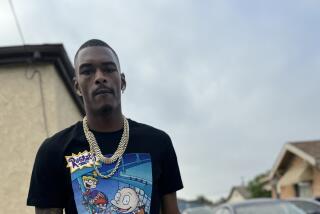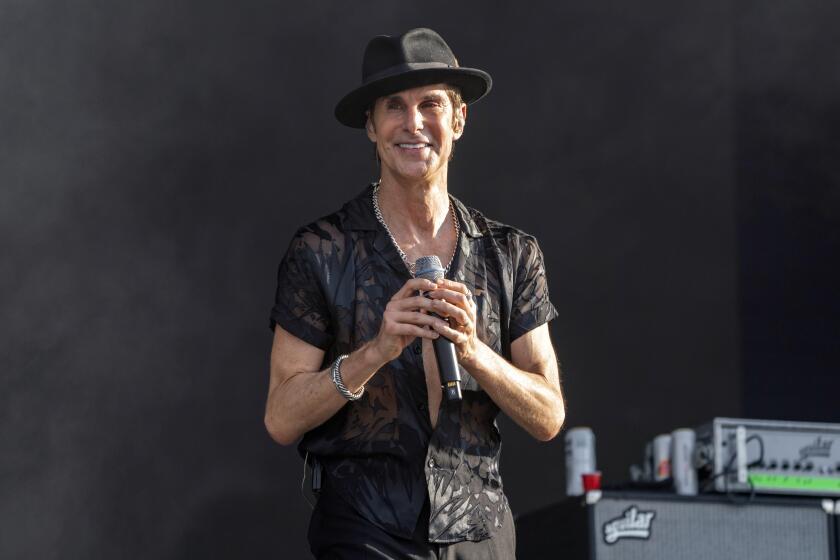A Music Genre and the Culture That Defines It
After the murders of West Coast rapper Tupac Shakur in 1996 and East Coast rapper Biggie Smalls in 1997, audiences began losing their appetite for repetitive lyrics about gangland battles. Tensions between rap stars on the East and West coasts had been dangerously brewing during the earlier years of that decade, until gunfire finally broke out as each faction tried to dominate the increasingly lucrative hip-hop market.
How this musical form, which began as neighborhood party music, ended up as a turf war is the subject of Alex Ogg and David Upshal’s “The Hip Hop Years.” Now commonly referred to as rap, the music is more accurately termed hip-hop, rap being the spoken part of the music.
Beginning in the Bronx in the early 1970s with DJ Clive Campbell, a.k.a. Kool Herc, hip-hop ironically began as a way to get away from gang violence.
With the DJ putting together music on a portable turntable, a rapper, once known as the MC, coining on-the-spot rhymes and dancers, known as B-boys, practicing wildly accomplished break-dance moves, hip-hop became the main attraction of neighborhood block parties and the newest and most popular arena for fierce competition as well.
In the early years, groups “battled” each other sheerly by trying to put on the hottest show and gain the audiences’ most enthusiastic applause. As Ogg and Upshal point out, it wouldn’t be too long before the terms of hip-hop competition drastically changed .
By the late 1970s, the Bronx had become “an area synonymous with poverty and hardship, a breeding ground for internecine warfare in which the American Dream was subservient to codes of survival.” Afrika Bambaataa knew all the dangers of the Bronx streets and began DJ-ing for parties when he was just 10 years old. He soon founded the “Zulu Nation enclave--a loose community of street kids,” helping to “transform New York’s gang culture into something creative, empowering and most importantly, inclusive.”
Joseph Sadler, a.k.a. Grandmaster Flash, from the South Bronx quickly became another accomplished DJ who would train many aspiring stars, including the renowned Grandwizard Theodore, in the art of mixing background sound for the MCs. In those early day, it was the MCs and the breakboys who were the prime attraction, though soon the MCs, known now as rappers, would steal the show.
Early rap rhyming was party-flavored, fun in spirit, not particularly social-minded or violent in content. When practitioners began recording their music and rhyme, trying to break into the popular music market, the pressure was on for rappers to distinguish themselves with original and compelling lyrics. While other groups laid strong foundations, it was Run-DMC that was mostly responsible for “introducing hip-hop to the mainstream of rock and pop culture.”
Even for Run-DMC, a good part of the appeal of hip-hop came from its resistance to gang culture. The group’s home of Queens suffered the same kind of gang violence as the Bronx, and hip-hop, as instituted by Bambaataa, “provided an arena in which to battle for regional pride without using fists or weaponry.”
But it would be Public Enemy, whose music was produced by the budding record company called Def Jam in the 1980s, that “instantly rendered the tradition of easygoing party rhyming obsolete.” Public Enemy sought a pared-down, raw sound, and its lyrics promoted an uncompromising sense of black identity and autonomy. Its second album, “It Takes a Nation of Millions to Hold Us Back” (1988), set the fire going by adamantly politicizing the content of rap lyrics.
From here on in “The Hip Hop Years,” Ogg and Upshal adopt an almost thriller-like approach in recounting the birth of gangster rap, and the toll it took on the lives of its practitioners. “West coast rap, very much the poor relation to New York’s hyper-creative hip hop expansion, finally began to stir in the late 80s.”
The first highly recognized West Coast rapper was Tracy Morrow, a.k.a Ice-T, “a former military man, and subsequent gangbanger.” In 1986, Ice-T released a record called “Six in the Morning,” which he himself says was considered “the first gangsta rap record” to hit the market. Suddenly, the West Coast had found a distinctive voice, one that would overshadow that of the East Coast for years to come.
N.W.A, a group that featured California’s Dr. Dre and Ice Cube, among others, recorded songs filled with crude exhortations to violence and thrust the group into the headlines and the “bad books of American authorities.” At a Detroit concert in 1989, the police arrived, threatening to make arrests if one of its more obscene songs was performed. N.W.A declined to perform the song, but attributed the high sales of the record to that incident.
The notorious Southern California rival gangs the Bloods and the Crips made their way into rap primarily via the company Death Row Records, a group that allegedly employed members of the Bloods. Artists like Snoop Doggy Dog (a former Crip charged and acquitted in relation to a slaying), and Tupac Shakur (an East Coast rapper and convicted of sexual assault who became affiliated with Death Row Records), helped forge the relationship between rap and real life violence.
Tupac’s murder in Las Vegas is thought to have been a Crip retaliation for the beatings of fellow gang members by Death Row Bloods. In turn, though positive proof has never been found, rumor has it that Biggie Smalls’ murder was “a payback killing for Tupac’s murder.” Whatever the case, these murders served as a wake-up call to artists and audiences alike.
Ogg and Upshal see such artists as Monie Love, Queen Latifah, Lauryn Hill, Eminem and others, as revitalizing the hyper-violent rap scene. It’s easy to see that female response may serve as a corrective to the brutal misogyny of some rap music, but, despite his brilliance, it seems hard to consider Eminem’s form of lyrical violence as revitalizing.
Born of the profound inequities within American society, the early years of hip-hop provide an important chapter to the social and cultural history of this country. How the music evolves beyond the posturing that fills the airwaves nowadays tells another, more predictable story that’s less about anger than it is about business.
More to Read
The biggest entertainment stories
Get our big stories about Hollywood, film, television, music, arts, culture and more right in your inbox as soon as they publish.
You may occasionally receive promotional content from the Los Angeles Times.










